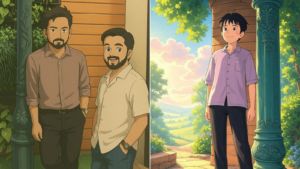As a published author, I compared Claude 3.7 Sonnet and Grok 3 in creative writing — here’s what I found.

Understanding Shakespeare’s Enduring Legacy
Have you ever pondered why William Shakespeare remains one of the greatest writers of all time? Despite passing away in 1616, his works continue to resonate with audiences, giving rise to phrases like “s/he’s no Shakespeare” when critiquing less impactful writing.
The Key to Shakespeare’s Success
One factor that sets Shakespeare apart is his profound grasp of human nature. He explored the intricacies of emotions, relationships, and societal dynamics, creating characters that still feel relatable centuries later. Unlike many modern AI tools that produce text, Shakespeare’s writing is imbued with a level of creativity and warmth that makes it truly resonate.
As an author with a deep curiosity about writing, I wanted to see if advanced chatbots could replicate this creativity. I decided to test two leading bots: Claude 3.7 Sonnet and Grok 3. Both had enticing claims regarding their stylistic capabilities and were readily accessible for extensive use.
The Battle of the Writing Bots
Choosing the Right Bots
I selected Claude 3.7 Sonnet from Anthropic, which promises a nuanced approach to writing, suggesting a poetic touch reminiscent of Shakespeare. The second bot, Grok 3 from Elon Musk’s xAI, claims to be the “world’s smartest” chatbot and is celebrated for its user-friendly, free access.
Both bots are unrestricted in terms of text output, allowing for an unfettered exploration of their creative capacities.
Aiming for Artistic Output
My goal was straightforward: I wanted to find out if these bots could create emotionally engaging content that matched the depth of human writing. I have previously encountered limits with other chatbots, so I was eager to test how these two would perform.
Initial Findings from the Bots
Lackluster Storytelling
AI inherently thrives on imitation, so I wasn’t expecting miracles. When I asked each bot to create a short story without specific directions, the outcomes were lackluster. For instance, Grok produced a story about Mia discovering a magical clock. Some phrases, such as “the air smelled of rust and secrets,” suggested an influence from mediocre young adult fiction.
In contrast, Claude’s story had a more intriguing line, but overall it lacked detail and emotional depth. This made it clear that while both bots can generate grammatically correct text, they still tend to fall short of captivating storytelling.
Enhancing Responses
Interestingly, when I directed the bots to rework one of my existing stories, their results became more engaging. Claude, renaming the piece "A Case of Grim Determination," emulated my Gothic style well. A moment from the text read impressively: “Throttled with a silken cord wrapped thrice around his neck like a grotesque cravat…”
In this setting, both bots offered more originality, although the flow and musicality typical of human writing were still absent.
Exploring the Results Further
Creative Rewrites
Encouraged by the improved responses, I pressed on. Grok responded to my guidance with an intricate style, showcasing an elaborate sentence: “At the alley’s end, beneath a rusted lantern swaying on its chain, lay a figure sprawled in a grotesque tableau…” Although the writing was creative, it still missed the emotional punch that makes stories memorable.
The Shortcomings of AI Narratives
Despite these efforts, neither bot succeeded in surpassing human touch. The final products were overly formulaic, lacking the emotional depth that can be crafted only by someone who has lived the human experience. They failed to capture the essence that makes literature relatable and impactful.
Messy Imitations vs. Human Creativity
While both Claude and Grok displayed capabilities in surface-level writing, their outputs still felt reminiscent of bland, polished drafts rather than genuine, heartfelt prose. I asked them to write in the style of Jane Austen, but the results felt disjointed and uninspired. Lines that echoed Austen’s well-loved phrases did not capture the subtlety and depth of her voice.
A Comparison with Design
This experience reminds me of comparing a meticulously crafted vehicle to a dull, unoriginal design. A Jaguar, with its curves and craftsmanship, conveys passion and artistry, while a Cybertruck might be functional but lacks nuance and emotion. Similarly, while both chatbots can string together words, they cannot replicate the artistry of the human experience.
The Essence of Writing
Ultimately, what resonates with readers is not just structure or grammar but a genuine expression of emotion, nuance, and the unpredictable beauty of real human insights. In a landscape increasingly populated by AI-generated content, the irreplaceable value of human emotion in storytelling remains clear.





